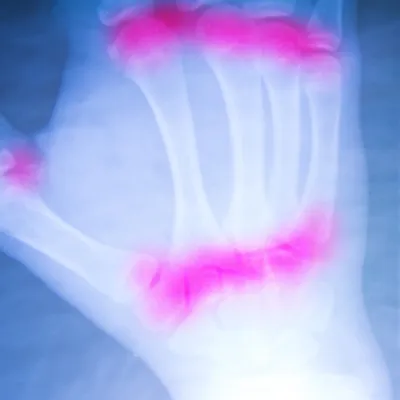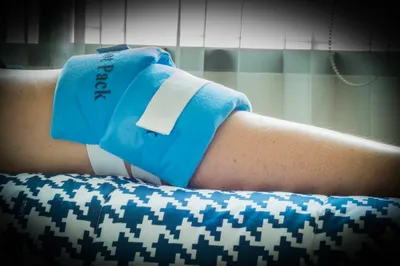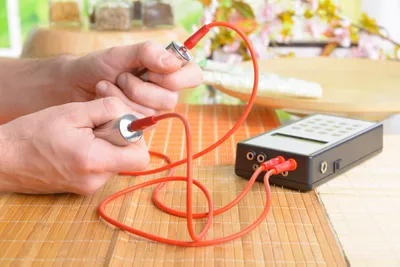Today, October 12th, marks World Arthritis Day, so what better time to talk about how to manage symptoms of rheumatic and musculoskeletal diseases? Rheumatoid arthritis causes inflammation, pain and limited mobility in joints, while there are a number of musculoskeletal disorders (such as osteoporosis) that can impact quality of life.
These diseases don’t just affect the elderly; according to BoneAndJointBurden.org, musculoskeletal diseases impact more than 50-percent of the U.S. population aged 18 or older (that number jumps to around 75-percent for seniors aged 65 and beyond). Let’s look at seven ways you can manage the symptoms of related health problems…
1. Keep a Record of Symptoms
The World Arthritis Day website suggests keeping a log of your daily symptoms, which can be useful when it’s time to sit down with your doctor or other health professional.
This can also be an effective way to vent any emotions that come with these diseases, adds the site. Some people with chronic illnesses keep the suffering to themselves rather than talking to others, which can lead to feelings of isolation.
2. Seek Massage Therapy
While massage therapy may have short-term benefits to manage associated pain of musculoskeletal problems, at least according to a post on the U.S. Library of Medicine, it can help give you a needed break from discomfort without turning to prescription drugs.
The post details a review that involved 26 random trials of 2,565 people. “Evidence indicated that massage reduces pain in the short term compared to no treatment in people with shoulder pain and osteoarthritis of the knee, but not in those with low back pain or neck pain,” explains the site. The post also notes that massage therapy can improve short-term function in those with a variety of pain sources.

3. Get some Light Exercise
Yes, we realize exercise can sometimes seem tough when you’re in pain, but we’re not talking about bench pressing weights or running a marathon. The Cochrane Library illustrates special exercises for those who are suffering from pain and discomfort due to musculoskeletal disorders.
For example, it says balance training can be helpful for those with rheumatoid arthritis that may be at increased risk for falling. “Exercise therapy is considered an important component of the treatment of musculoskeletal conditions,” notes the site, adding it can help to reduce pain, increase range of motion and even help prevent bone fractures. Stretching is also important. Check out these exercises to help manage rheumatoid arthritis!
4. Put Pain on Ice
EveryDayHealth.com suggests using ice packs to help manage musculoskeletal pain (in particular, following an injury). It presents the RICE acronym, which stands for rest, ice, compression, and elevation.
Be warned though, as the same source notes that icing can actually reduce the strength of muscles—so not the best technique to use if you’re heading for some light exercise as mentioned earlier. It’s best to ice and chill out after.
5. Try Osteopathic Treatment
While massage therapy often promotes the manipulation of deep tissues, osteopathy takes a somewhat different but still effective approach. Osteopathic Manipulation Therapy (OMT) uses gentle pressure and resistance techniques to calm muscle spasms, notes EveryDayHealth.com.
The source notes this therapy can gently increase range of motion and reduce pain. It is regarded as most effective for problems involving back and neck pain, the places where massage therapy is apparently less effective, adds the source (so why not use both?).
6. Learn Biofeedback Techniques
ChronicPainPerspectives.com notes, “Integrating biofeedback into a patient’s treatment plan can ease pain and improve quality of life.” But what is biofeedback, you ask? It is the practice of becoming more aware of pain triggers to help prevent them in the first place.
Patients may find themselves from one health practitioner to another in search of relief, and biofeedback aims to help you manage some of the symptoms on your own. “There is considerable evidence that supports the use of biofeedback as a nonpharmacologic (drug-free) therapy for chronic pain,” notes the site. However, it also warns that biofeedback is “not a quick fix”.
7. Ask for Prescription Drugs
If other forms of treatment aren’t working, you should ask your doctor for some help in the form of medication. WebMD notes that drugs referred to as nonsteroidal anti-inflammatories (NSAIDS) can be effective in reducing pain. Sleep aids may also be prescribed.
In some cases, the same types of medications can be administered directly to the most painful areas via needles, notes the source. Your doctor can help determine the right dosage for you, so don’t try to manage your pain by self-medicating.









